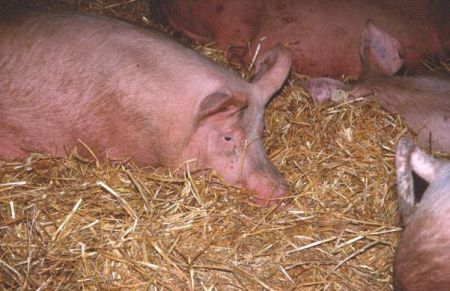The specified optimal temperatures for empty and pregnant sows are between 8 - 18 °C, with regard to the farrowing house there are temperature specifications of 8 °C / 20 - 22 °C and 32 °C (with / without bedding or requirements for newborn piglets). The piglet rearing house should have temperatures between 26 and 22 °C that decrease with age and weight. Furthermore, this temperature should initially be kept constant when fattening pigs are installed, but this should decrease to approx. 16 °C by the end of fattening. It is therefore very difficult to be able to take all temperature requirements equally into account in a combined stable (breeding, rearing and fattening in one building). In the pig breeding and fattening stable at the Higher Federal Training and Research Institute for Agriculture Raumberg-Gumpenstein (Trautenfels teaching farm), the current stable climate conditions must be checked. Contrary to the literature, the temperatures prevailing there can be classified as very low compared to other stables (around + 4-5 °C), and the ventilation system is only operated with gravity during the winter months. Heat lamps are used to ensure the piglets' heat supply. The sows and the boar have constant access to a covered run.
Method: A mini and a MikromecMultisens data logger from the department is installed to document the stable temperature and relative humidity in the stable and in the outdoor area (run). The data obtained is read out every 14 days. On this occasion, the foreign gases CO2, NH3 and H2S are measured in the areas of breeding sows/boars, exercise area, farrowing, rearing and fattening using electronic devices to assess the air exchange.
Aim: The measurement results should show that if the air quality is appropriate, there are no health problems for the animals. The evaluation and interpretation of the data should enable relevant recommendations for practice. The results are published in practice-relevant specialist journals.







